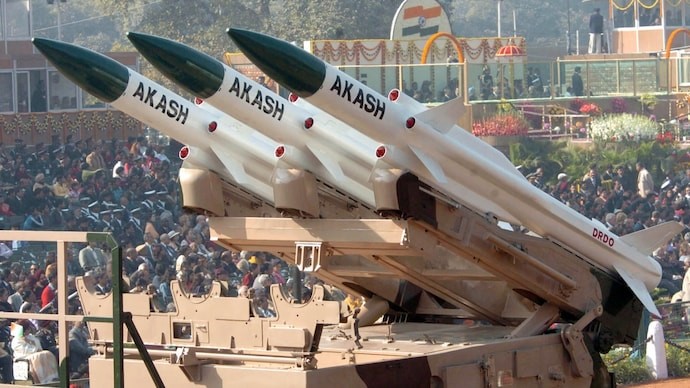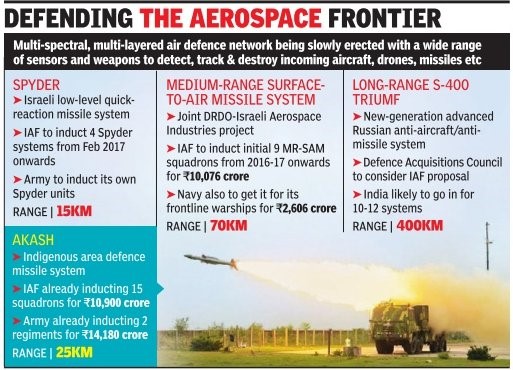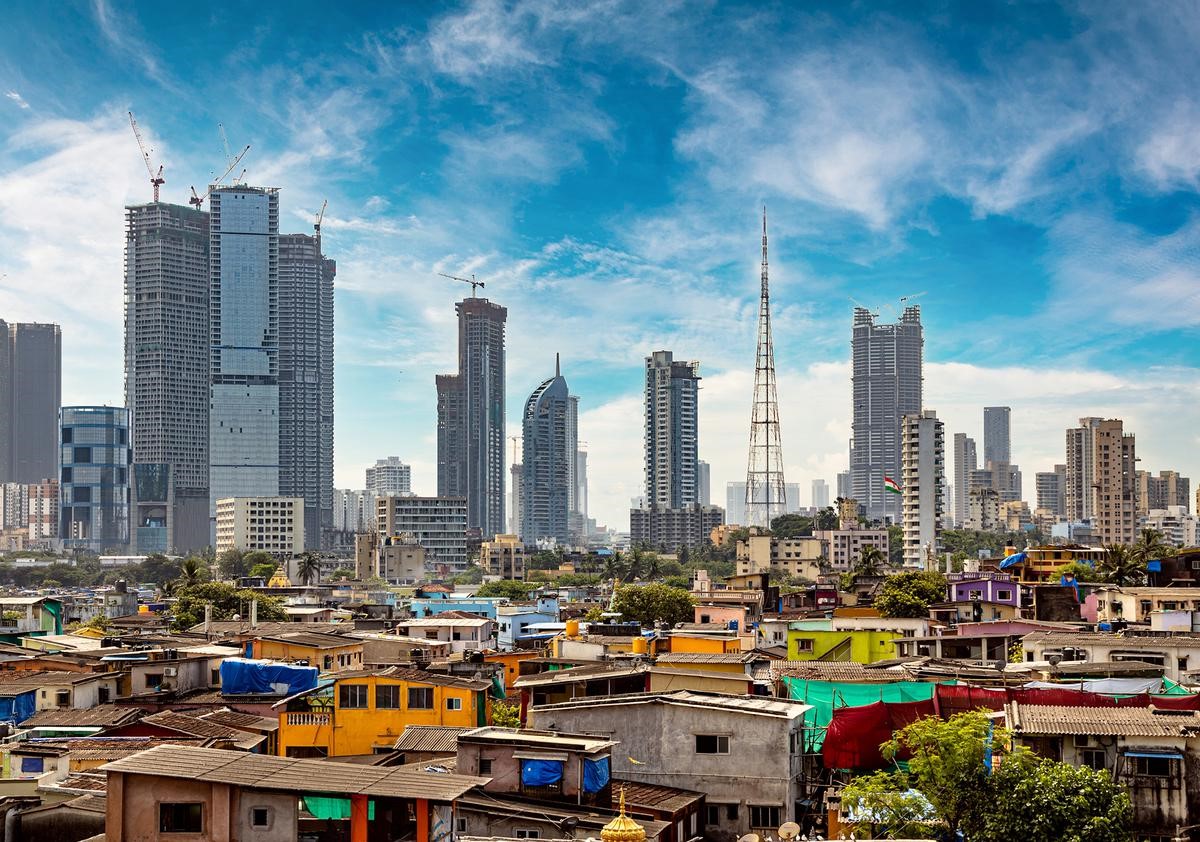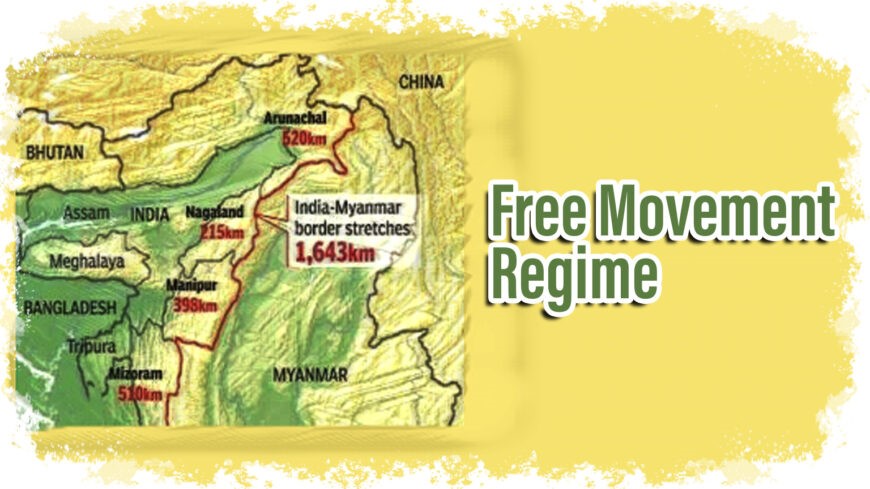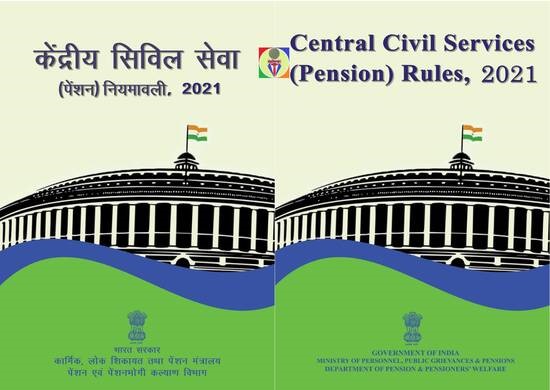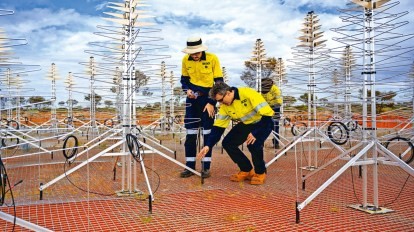Akash Missile System: India’s Iron Dome
Context:
India showcased the effectiveness of its Akash surface-to-air (SAM) weapon system during the recent Exercise Astrashakti 2023, where a single firing unit successfully engaged and eliminated four unmanned targets simultaneously. Several nations, including Armenia, Brazil, and Egypt, have expressed interest in procuring the Akash SAM.
Akash Missile System Overview
Overview
Development and Production: The Akash system, developed by the Defence Research and Development Organisation (DRDO) and manufactured by Bharat Dynamics Ltd (BDL).
Type: Short-range Surface-to-Air Missile (SAM).
- Engagement Capacity: Capable of engaging up to four aerial targets simultaneously within a range of 25 km from a single firing unit.
- Target Engagement: Able to target multiple threats concurrently in both group and autonomous modes.
- Electronic Counter-Counter Measures (ECCM): Equipped with countermeasures to thwart enemy jamming and evasion tactics.
- Mobility and Agility: Configured on mobile platforms, ensuring swift deployment and relocation.
- Operational Use: Currently deployed by the Indian Army and the Indian Air Force (IAF).
- Range and Altitude: Effective range spans from 4.5 km to 25 km, with an altitude range of 100 meters to 20 km.
- Physical Dimensions: Length: 5,870 mm; Diameter: 350 mm; Weight: 710 kg.
- Automation and Response: Fully automated system with a rapid response mechanism, from target detection to neutralization.
System Architecture: Adopts an open-system architecture, providing adaptability to current and future air defense environments.
Comparison with Israel’s Iron Dome
- Interception Capabilities: Akash is frequently compared to Israel’s Iron Dome, demonstrating similar capabilities in intercepting UAVs, smaller projectiles, helicopters, and aircraft.
- Defensive Role: While sharing similarities with the Iron Dome, Akash is primarily designed for defending against larger aerial threats such as aircraft, rather than focusing on smaller rockets.
India’s Transition in Slum Definitions
Context:
This study, authored by Nipesh Narayanan and published in the Economic & Political Weekly on October 21, 2023, explores the evolving portrayal of slums in Indian parliamentary discussions spanning the period from 1953 to 2014.
Policy on Slums: The alterations in these representations have wielded considerable influence over governmental policies and strategies concerning slums.
Evolution of Discourses on Slums
- Parliamentary Debates Analysis: Narayanan scrutinized 1,228 debates in the Rajya Sabha and various policy documents, including Five-Year Plans, to delineate the development of discussions surrounding slums.
- Dynamic Definitions: The research underscores the flexible nature of slum definitions, emphasizing a tendency to disregard urban inequality as a primary factor in slum genesis.
Eras of Changing Perspectives
- 1950s-1960s: Initially, slums were perceived as consequences of partition and rapid urbanization, with the emphasis on elimination due to health and spatial constraints, sidelining socio-economic factors like migration. The Slum Areas Act of 1956 marked a significant shift, permitting government intervention in slum areas.
- Early 1970s-Mid-1980s: The narrative evolved to view slums as necessary for development rather than eradication. Town planning emerged as a crucial tool, relocating slums to city peripheries and prioritizing basic amenities over demolition.
- Mid-1980s-Late 1990s: With the National Commission on Urbanisation’s 1985 report, cities and slums started being perceived as economic assets. This era witnessed a focus on housing policies and infrastructure development, with economic reasoning steering interventions.
- 2000s-2014: The 2001 Census supplied comprehensive data on slums, prompting targeted schemes. Slums transitioned from social concerns to technical, economic objects, with an emphasis on upgrading strategies, legal rights, and property rights for slum dwellers.
Slum Formation and Government Response
- Causality and Complexity: The research identifies urban planning issues, population growth, land pressure, and housing affordability as pivotal factors in slum formation.
- Government Role: The Union government’s role shifted to funding State governments for urban improvement, with an emphasis on data-driven policies.
Technocratic Solutions and Challenges
- Technological Reliance: The current government policies manifest an increasing dependence on technological solutions for urban issues.
- Critical Examination: The article cautions against utilizing slums merely as tools for anti-poverty policies and stresses the importance of comprehending slum formation beyond numerical data.
Conclusion
Historical Insights: Narayanan’s analysis offers valuable insights into the historical shifts in government perceptions and actions towards slums.
Significance for Urban Studies: This research significantly contributes to the comprehension of urban dynamics, socio-economic inequalities, and the intricacies of slum life in India.
Suspending the Free Movement Regime: India’s Border Policy with Myanmar
Context:
The Indian government, on January 2, unveiled its intention to eliminate the Free Movement Regime (FMR) along the Myanmar border, necessitating residents in border areas, who were previously allowed unrestricted movement, to obtain visas.
About Free Movement Regime
- Introduced in the 1970s, the FMR permitted individuals residing within a 16 km radius of the India-Myanmar border to travel up to 16 km into the neighboring country without a visa.
- India shares a border of 1,643 km with Myanmar, spanning through the States of Arunachal Pradesh (520 km), Nagaland (215 km), Manipur (398 km), and Mizoram (510 km).
- The FMR aimed to acknowledge the familial and ethnic ties between communities on both sides of the unfenced border. Last revised in 2016, the regime was suspended in Manipur since 2020 due to the COVID-19 pandemic.
Reasons for the Policy Shift
- Security and Illegal Activities: Scrutiny arose over the FMR’s role in facilitating illegal immigration, drug trafficking, and insurgency.
- Refugee Influx Post-Coup: After Myanmar’s military coup in February 2021, more than 40,000 refugees entered Mizoram, and around 4,000 entered Manipur, heightening security concerns.
- Local Government Stance: Manipur’s Chief Minister urged the Ministry of Home Affairs to cancel the FMR, attributing ethnic violence in the state to unrestricted movement across the border.
Implications of Scrapping the FMR
- Impact on Local Communities: The discontinuation of the FMR could significantly affect the daily lives of border residents, heavily reliant on cross-border access for various needs.
- Cultural and Social Disruption: The policy change may strain the cultural and social fabric of communities with shared ethnicities across the border.
Way Forward
- Border Fencing: The government aims to fence approximately 300 km of the border, with a tender expected soon.
- Regulatory Revisions: Experts propose refining the FMR to better regulate movement while preserving cross-border ties.
- Infrastructure and Trade: Improving infrastructure and formalizing trade at designated entry points could alleviate some negative impacts.
- Community Engagement: Involving border communities in decision-making is crucial for effective and sensitive border management.
Conclusion
Balancing Security and Community Needs: The decision to terminate the FMR necessitates a nuanced approach that takes into account both national security and the rights of border communities.
Diplomatic Engagement: Strengthening diplomatic relations with Myanmar is pivotal to effectively managing this transition.
Future Challenges: As India navigates this policy change, it grapples with the challenge of securing its borders while respecting the socio-economic realities of border populations.
Amendment in Central Civil Services (Pension) Rules, 2021
Context:
In a notable development, the CCS (Pension) Rules, 2021, administered by the Department of Pension & Pensioners’ Welfare, have been revised to grant female Government servants the authority to prioritize their children for family pension over their husbands.
Background:
Under the CCS (Pension) Rules, 2021, family pension is initially bestowed upon the spouse of a deceased Government servant or pensioner. Eligibility for family pension for children and other family members arises only after the spouse becomes ineligible or passes away.
Concerns Raised:
The Department of Pension & Pensioners’ Welfare received numerous inquiries from Ministries/Departments regarding the eligibility of a female Government servant/pensioner to nominate her child/children for family pension in scenarios involving marital discord, divorce proceedings, or legal actions.
Decision and Process:
Request During Legal Proceedings:
– In cases where divorce proceedings or legal actions under specific acts are pending, a female Government servant/pensioner can submit a written request to allocate family pension to her eligible child/children instead of her spouse in the event of her demise.
Disbursement of Family Pension:
- If the female Government servant/pensioner, who made the request, passes away during the legal proceedings, family pension will be disbursed in the following manner:
- If survived by a widower with no eligible child, family pension goes to the widower.
- If survived by a widower with minor or disabled children, family pension goes to the widower as their guardian.
- If survived by a widower with children who have attained majority but are eligible, family pension goes to the children.
- Once children become ineligible, family pension goes to other eligible children, if any.
- After all children are ineligible, family pension goes to the widower until his death or remarriage, whichever is earlier.
Significance:
This amendment marks a progressive stride in empowering women employees/pensioners, addressing concerns related to family pension eligibility during legal proceedings and marital disputes.
Another eye in sky, on ground: India is now part of world’s largest radio telescope project
Context:
India has recently become a participant in the Square Kilometer Array Observatory (SKAO), a major international scientific initiative functioning as the world’s largest radio telescope.
About:
In other news, ISRO launched a distinct observatory to explore X-rays and black holes in deep space, while plans are underway to construct the third node of the US-based Laser Interferometer Gravitational Wave Observatory (LIGO) in Maharashtra.
About Square Kilometer Array Observatory (SKAO):
- India, represented by the Pune-based National Centre for Radio Astrophysics (NCRA) and other institutions, has been actively involved in the development of SKA since its inception in the 1990s.
- The Department of Atomic Energy has disclosed plans to establish the third LIGO node in the Hingoli district of Maharashtra, with the government’s approval and a financial allocation of Rs 1,250 crore marking the initial step towards formal participation.
- The SKAO, established as an intergovernmental organization in 2021, requires member countries, including India, to sign and ratify the SKAO convention.
- Member nations encompass Australia, Canada, China, Italy, New Zealand, South Africa, Sweden, the Netherlands, UK, Portugal, and Spain, with SKAO headquartered at the Jodrell Bank Observatory in the United Kingdom.
- The primary contribution from India to SKA involves the development and operation of the Telescope Manager element, which comprises the “neural network” or software crucial for the telescope’s functionality.
- Neural networks, also known as artificial neural networks (ANNs) or simulated neural networks (SNNs), constitute a subset of machine learning and play a central role in deep learning algorithms, inspired by the structure and function of the human brain.
- Regarding the Square Kilometer Array Telescope (SKA), it is situated in Meerkat National Park, Africa, and Murchison Radio Astronomy Observatory, Australia.
- The SKA, conceived in 1991, aims to combine signals from numerous small antennas over a vast distance to simulate a colossal radio telescope with high sensitivity and angular resolution, utilizing aperture synthesis.
GRAVITATIONAL WAVES
- Gravitational wave research, a promising field for scientific discovery, involves the study of ripples in space-time resulting from violent processes in the Universe.
- First predicted by Albert Einstein in 1916, gravitational waves were detected by the two existing LIGO detectors in the US, earning the Nobel Prize in Physics in 2017.
LIGO
- LIGO, or the Laser Interferometer Gravitational-wave Observatory, stands as the world’s largest gravitational wave observatory, comprising two large laser interferometers positioned 3000 kilometers apart. LIGO-India is a collaboration between the LIGO Laboratory and three Indian institutes, aiming to be the crucial fifth detector in the global gravitational wave detector network.
- The National Centre for Radio Astrophysics (NCRA), a unit of the Tata Institute of Fundamental Research, operates India’s largest network of radio telescopes, known as the Giant Metrewave Radio Telescope (GMRT). Recognized by the IEEE as a Milestone facility in 2021, GMRT has contributed significantly to the detection of nano-hertz gravitational waves in June 2023.

